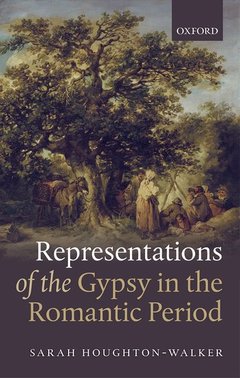Description
Representations of the Gypsy in the Romantic Period
Author: Houghton-Walker Sarah
Language: English
Approximative price 149.35 €
In Print (Delivery period: 21 days).
Add to cart
Publication date: 10-2014
306 p. · 14.7x22.2 cm · Hardback
306 p. · 14.7x22.2 cm · Hardback
Description
/li>Biography
/li>
In early eighteenth-century texts, the gypsy is frequently figured as an amusing rogue; by the Victorian period, it has begun to take on a nostalgic, romanticized form, abandoning sublimity in favour of the bucolic fantasy propagated by George Borrow and the founding members of the Gypsy Lore Society. Representations of the Gypsy in the Romantic Period argues that, in the gap between these two situations, the figure of the gypsy is exploited by Romantic-period writers and artists, often in unexpected ways. Drawing attention to prominent writers (including Wordsworth, Austen, Clare, Cowper and Brontë) as well as those less well-known, Sarah Houghton-Walker examines representations of gypsies in literature and art from 1780-1830, alongside the contemporary socio-historical events and cultural processes which put pressure on those representations. She argues that, raising troubling questions by its repeated escape from the categories of enlightenment discourses which might seek to 'know' or 'understand' in empirical ways, the gypsy exists both within and outside of conventional English society. The figure of the gypsy is thus available to writers and artists to facilitate the articulation of dilemmas and anxieties taking various forms, and especially as a lens through which questions of knowledge and identity (which is often mutable, and troubling) might be focussed. .
Sarah Houghton-Walker is a Fellow of Gonville and Caius College, Cambridge, where she teaches on the literature of the long eighteenth century. Her first book was on John Clare, and she is a founding co-Director of the Cambridge Centre for John Clare Studies.
© 2024 LAVOISIER S.A.S.




